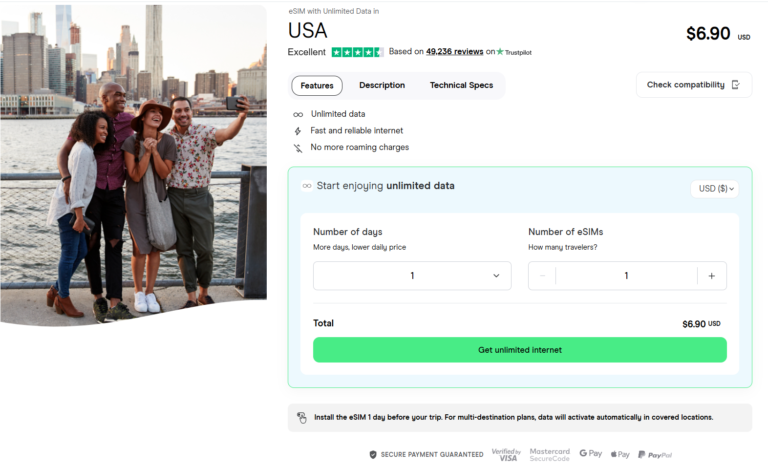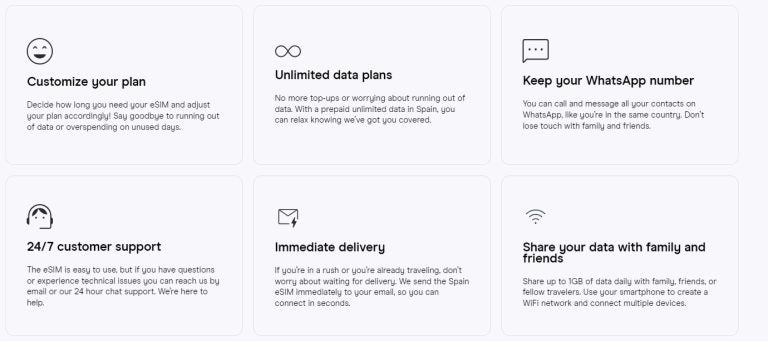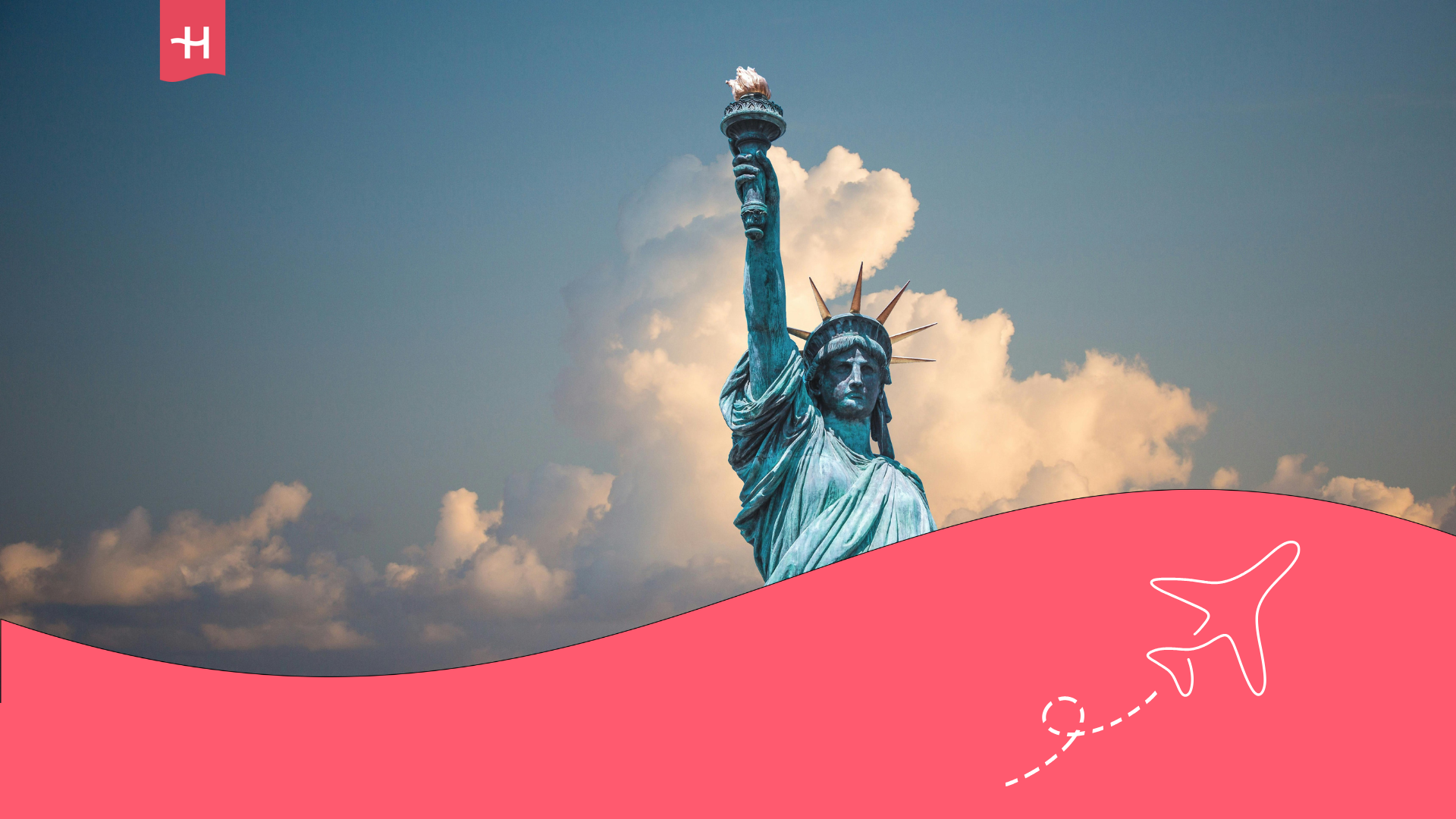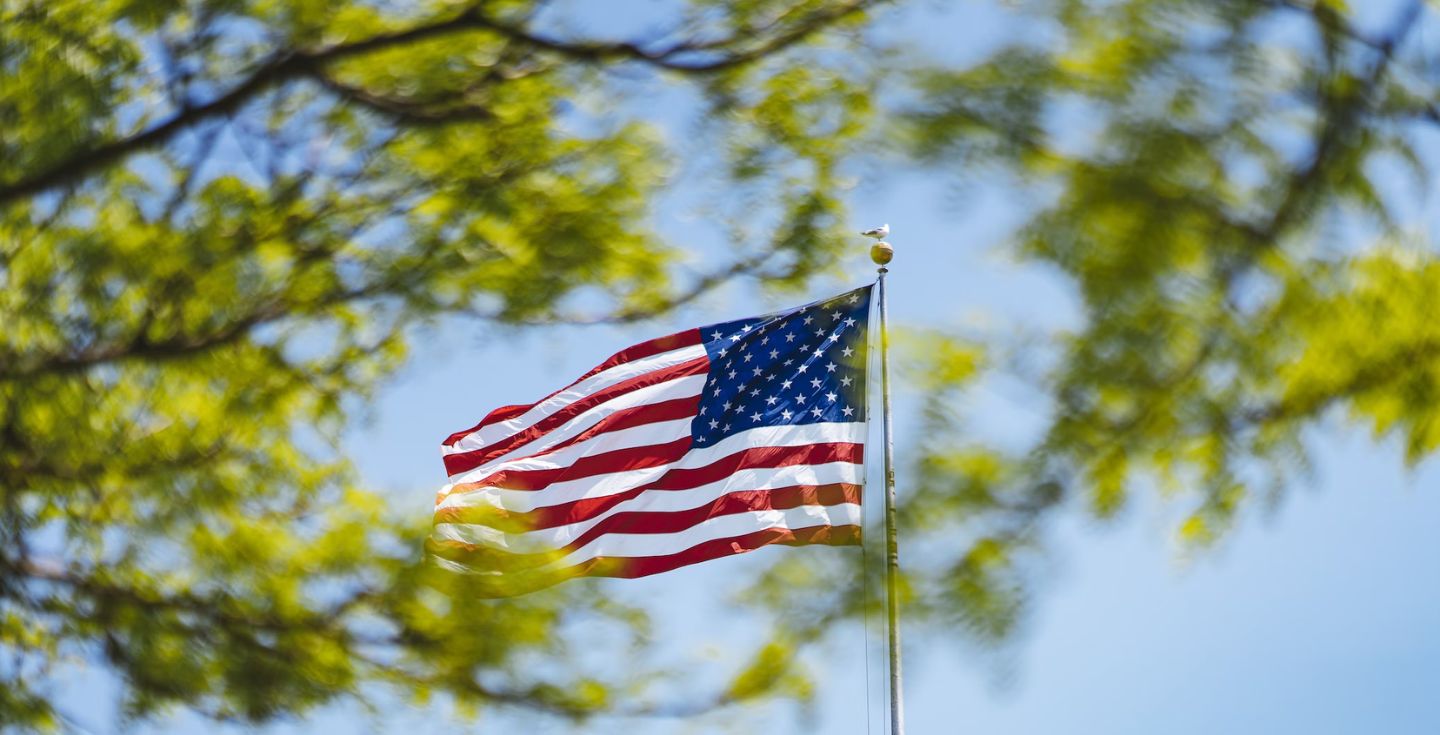Traveling from Canada to the US: Tips and Tricks
Travel from Canada to the US with everything you need with our checklist. Find out how to remain connected and more.
You’re in Canada and you’re on a plane ready to your next destination: The United States. Traveling from Canada to the US provides an exciting opportunity to visit new places and learn about different cultures. Whether you’re planning a holiday or a business trip, being well-prepared is crucial to ensuring a pleasant and trouble-free voyage. We will offer you with useful recommendations, tips and tricks for going from Canada to the United States as well as important information about staying connected in the US.
Ports of Entry and Transportation Methods

When going from Canada to the United States, you have various options for ports of entrance and numerous transportation choices available for traveling. Depending on your own preferences, you’ll know which suites you best.
Through the Air
Flying is the most convenient and time-efficient choice for long-distance travel. Regular flights between Canadian and American cities are operated by major airlines. Airports such as Vancouver International Airport, Toronto Pearson International Airport, and Montreal-Pierre Elliott Trudeau International Airport are among the most common.
Popular routes are New York/Toronto, Chicago/Toronto, Toronto/Los Angeles, Montreal/Fort Lauderdale, and plenty more. If you intend to travel to a small town, then generally, you’ll have to travel to the closest airport and, from there, take a bus that will drop you off at your final destination.
Some airlines that fly between the US and Canada are Air Canada, WestJet, Flair, American Airlines, and many more.
Traveling by air has become cheaper as time goes by. For example, a round trip Montreal-Orlando costs around $290. A flight from Vancouver, BC to Dallas, TX costs $513.
Traveling to Los Angeles? Experience stable connection through Los Angeles with Holafly’s eSIM for Los Angeles.
By land
Major land crossings are also possible in places like the Peace Arch in British Columbia and Niagara Falls in Ontario. Look up your options and choose an entry point based on your destination and convenience. Currently, there are 146 POEs between Canada and the US. To break it down for you, 26 of these POEs are rail lines and 120 are roadways (19 bridges, 1 tunnel, and 100 roads).
Driving can be a suitable option if you prefer an enjoyable and slow-paced travel or want to visit different locations. In case you have your own car, you can drive to your destination, make sure you get insurance for the road. You’ll need it in case of any mishap, as well as an extra tire and tools as well as all the essential papers, such as a valid driver’s license, passport, and any other needs, such as an International Driving Permit.
There are also public transportation methods like buses and trains. Companies like Greyhound and FlixBus offer routes from different cities in Canada to the United States. For example, a bus ticket from Toronto to New York City costs around $80 and takes almost 13 hours. If you want to opt for going on a train, Amtrak is your way to go. They operate railways across the United States and a few in Canada. To give you an idea of the costs, a ticket from Toronto to Union Station in New Jersey will cost you around $218 and travel time is estimated at 14 hours. Consider the fact that if you take a train you’ll need to board several different trains to get to your destination.

Entry Requirements
It’s crucial for you to understand the entry requirements when traveling from Canada to the US. For entry, Canadian citizens normally need a valid passport, while permanent residents may need to bring supplementary identification, such as a Green Card. There is one special program that provides a preauthorization to enter the US without a passport. This is the NEXUS program. However, be aware that this only applies to Canadian citizens. This initiative consists in a pre-approval that expedites the entry into the United States.
Customs and Immigration Procedures
When crossing the border, be prepared for the customs and immigration procedures. If you’re bringing and over the limit number of products or items from Canada, ensure that all applicable customs declaration forms have been correctly completed. Have all relevant supporting documentation readily available. Answer border officials’ queries honestly and supply any needed information. Remember to declare any products or things that require declaration, as failure to do so can result in penalties.
What to bring
On your trip to the US from Canada, it’s best to not only worry about how you’re and when you’re going to travel, but also what you’re taking with you. Depending on the climate and the weather, you must pack appropriate clothing. Spring and summer times call for shorts and T-Shirts to enjoy the sun and beaches. On the other hand, fall and winter mean you have to wear sweaters and coats to wander in the beautiful scenery of the orange-brown leafs and the breathtaking views of snow.
Personal items like your phone charger, an extra battery and an adapter are vital to pack for your journey. You’ll need it if you’re on the road and running low on charge or if you need to charge your phone from your car. Additionally, prescription medication is definitely a must-have for you to stay in good health. Check everything that we recommend for you to take in our final checklist!
Staying Connected
Among everything that we’ve previously mentioned, staying connected is just as imperative as taking your meds with you. Even though you may want to get data to share your adventures with friends and family back home. Perhaps you want to post all the spectacular places that you’ve been to. But other than that, you definitely want to use it to check maps and routes of where you wish to go. Moreover, with a data connection, you’ll be able to keep your reservations and tickets on your smartphone just in case and it’s more convenient.
There are plenty of options to connect in the US. From Pocket WiFi to the revolutionary eSIM. Although, some options may be too cumbersome or expensive, the new eSIM is the current trend in the consumer industry. You just have to make sure that you have a compatible cellphone and that the provider also supports eSIMs.
Holafly’s eSIM
The Holafly eSIM for the USA is the way to go when it comes to a reliable and stable connection. They offer unlimited data for any and all their plans, which is a huge perk. Additionally, you can easily get an eSIM from their official website or their user-friendly app. Their plans go from 1 day to 90 days and prices range from $6.90 up to $139.90.

One added benefit is that you won’t have to worry when it comes to completing your purchase because payment methods available are PayPal, Master and Visa debit or credit cards, Apple Pay and Google Pay. With Holafly, you won’t miss a beat!

For frequent travelers, we also recommend the eSIM for North America, which offers coverage in both destinations with a single data plan.
Final Checklist for your travels
Before the Trip:
- Valid passport
- Visa or ESTA (if applicable)
- Travel insurance
- Check entry requirements and travel advisories
- eISM
Travel Documents:
- Copies of passport or visa, and travel insurance
- Itinerary, hotel reservations, and transportation tickets
- Emergency contact information
- Driver’s license or ID (if planning to drive in the US)
- International Driving Permit (if required)
Money and Payments:
- US dollars (cash)
- Credit/debit cards (notify your bank about your travel plans)
- Travel wallet or money belt
Medications and Health:
- Prescription medications (carry in original packaging with prescriptions)
- Basic first aid kit
- Travel-size toiletries (complying with TSA guidelines)
- Personal care items (toothbrush, toothpaste, etc.)
- Hand sanitizer
Electronics and Accessories:
- Phone, camera, or other electronics
- Chargers and adapters
- Power bank
- Travel adapter (if needed)
- Headphones
Clothing and Accessories:
- Weather-appropriate clothing (consider layering options)
- Comfortable walking shoes
- Swimwear (if applicable)
- Hat, sunglasses, and sunscreen
- Umbrella or rain jacket (if needed)
- Sleepwear and undergarments
- Extra pair of socks
Travel Comfort:
- Neck pillow and travel blanket
- Snacks and refillable water bottle
- Entertainment (books, magazines, music, etc.)
Miscellaneous:
- Maps and guidebooks
- Travel locks and luggage tags
- Backpack
- Travel-sized laundry detergent (if needed)
- Reusable shopping bag
Personal Items:
- Wallet, cash, and cards
- Keys
- Sunglasses
- Any necessary personal items (e.g., glasses, contact lenses)





 Language
Language 


















 No results found
No results found













